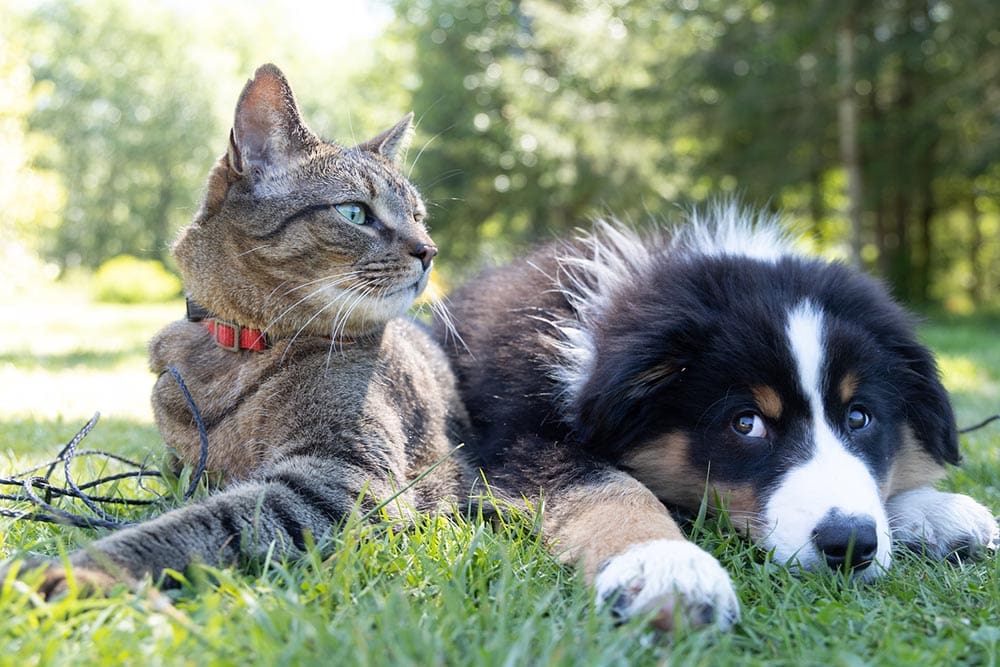How to Give a Cat Liquid Medicine: 6 Vet Reviewed Tips
Updated on
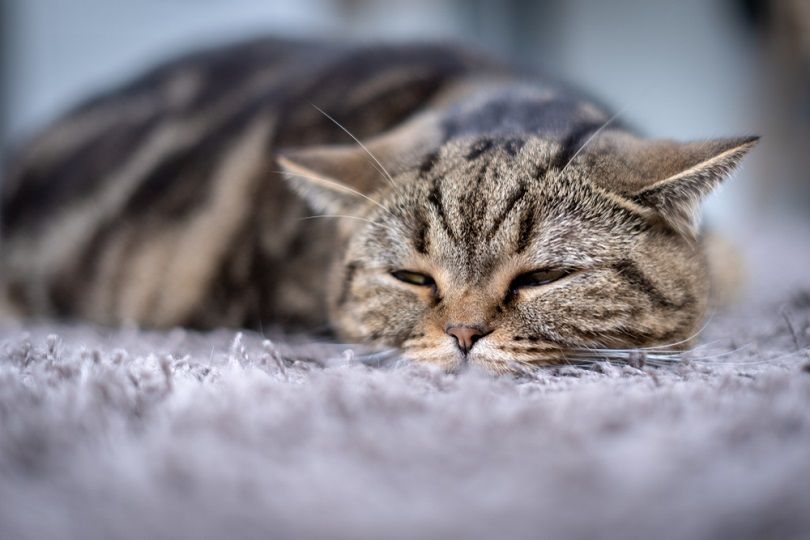
Every cat owner hopes their kitty lives a long and healthy life without needing medication, but unfortunately, that’s not the reality for most. Having a sick cat can be stressful for many reasons, including that many cats aren’t the best at taking their medicine! If your cat is prescribed a liquid medication and you aren’t sure what to do, you’ve come to the right place. Here are six expert tips on how to give a cat liquid medicine.
The 6 Tips to Give a Cat Liquid Medicine
1. Mix the Medicine With Something Tasty
If your cat generally has a good appetite, you may be able to give it liquid medicine by mixing it with canned food. First, make sure that the medication can be given with food. Some liquid medications must always be given with food, while a few should be given on an empty stomach. For best results, make sure your cat is hungry and mix the full dose of medicine with a small portion of food and offer it to your cat. Avoid adding the drug to a full meal because there’s no way to know whether your cat consumes the entire dose if they don’t finish the food.
If the liquid medicine has a strong taste or smell, you may not be able to fool your cat into eating it in food, but it’s worth a try because this is the easiest way to give liquid medicine.
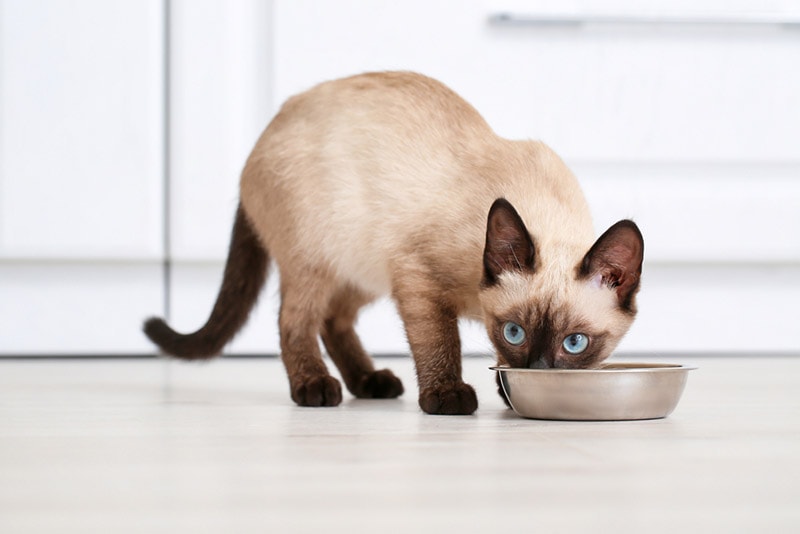
2. Warm Up the Medicine
If your cat doesn’t eat the liquid medicine with food, you’ll have to give it directly with a syringe or medicine dropper. One tip to make this easier is to warm up the medicine. Many liquid medicines are refrigerated; warming them up could make your cat more accepting of their dose.
Never microwave the medicine or warm up the entire bottle at once. Instead, put your cat’s dose in a syringe and warm it in your hand or place it in a bowl or cup of warm water. Test the temperature before you give your cat the medicine to avoid accidentally burning its mouth.
3. Control Your Cat’s Movements
To make it easier to give your cat liquid medicine with a syringe, you may need to gently restrain them to prevent them from running away or swatting the medicine out of your hand. Try positioning your cat in your lap so it can’t back away from the syringe. Hold the syringe in your dominant hand and position the other under your cat’s chin to control its head and mouth as you give the medication. You could also ask another trusted person to hold your cat while you give the medicine.
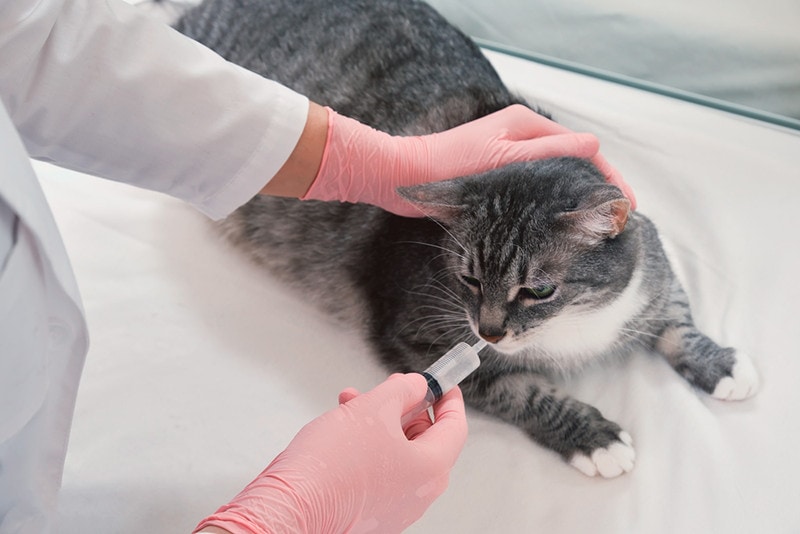
4. Move Slowly and Stay Calm
When your cat is secure in your lap or with your helper, place the syringe in the back corner of their mouth. Give the medicine slowly rather than shooting it quickly into your cat’s mouth. Slow administration allows your cat to swallow the drug safely.
Giving it too quickly increases the risk that your cat could aspirate or inhale some of the liquid into their lungs. To prevent your cat from spitting out the medicine, keep your hand under its chin and stroke its throat to encourage swallowing. Speak calmly to your cat and remain calm as you give the medication to encourage your cat to stay as relaxed as possible.
5. Wrap Your Cat in a Towel or Blanket
If your cat is extra wriggly,or you don’t have anyone to help you, you may need to try wrapping them in a towel or blanket for extra control. Using a medium sized soft towel, place it on a flat surface and then put your cat on top, facing away from you. Bring up each side of the towel around your cat’s neck so that just their head is out . Hold them gently but firmly.
Wrapping your cat up also helps protect your arms and hands if your kitty tries to scratch at the syringe. Try giving the medicine without wrapping your cat first because some felines may become more stressed by this method.
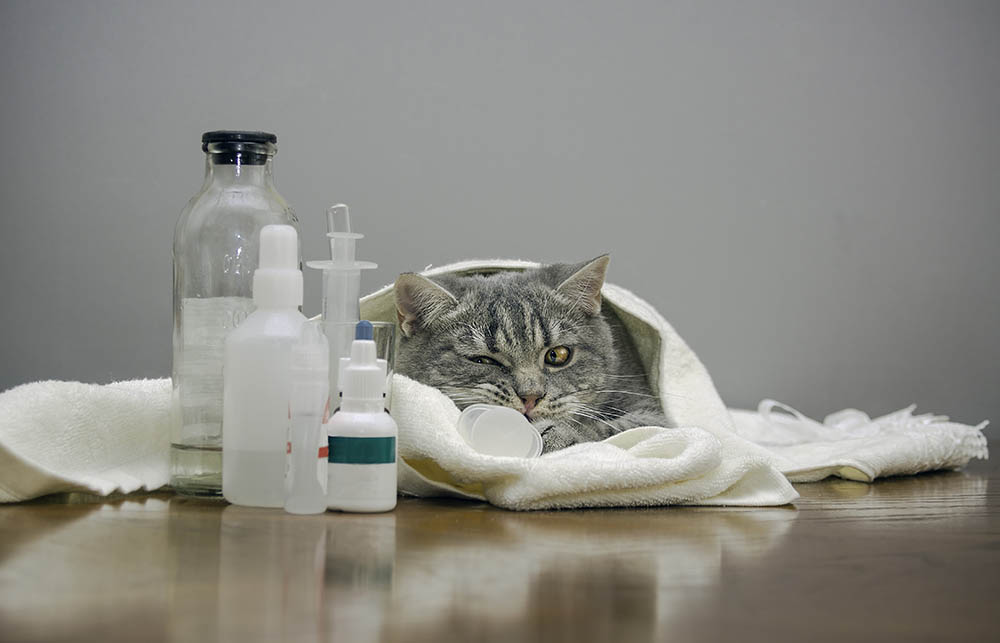
6. Reward Your Cat
After your cat has successfully taken their liquid medicine, reward them with a favorite treat or safe human food like chicken. Not only will this help get the taste of the medication out of your cat’s mouth, but it also helps form a positive association in your cat’s mind.
Yes, they have to put up with taking medicine, but they’ll get to eat something delicious afterward. If your cat is too annoyed or worked up to eat the treat, praise and reward them with petting or a good ear scratch.
What to Expect After You Give Your Cat Liquid Medicine
Many cats drool or foam at the mouth after taking liquid medicine. This is typically a reaction to the taste of the drug rather than any concerning allergic response. Before giving any medication, ask your vet about possible side effects, so you’ll know what to watch out for.
It’s also common for cats to spit out some portion of their liquid medicine. If this happens, don’t give them another dose without checking with your vet. It can be hard to know how much of the dose your cat lost, and waiting until the next time it’s due may be safer.
Make sure you give an accurate dose of medication each time and follow all directions for administration. For example, should the medicine be given with a meal or on an empty stomach?
 Conclusion
Conclusion
Your vet and their staff know that giving your cat medicine can be tough. These six tips for giving your cat liquid medicine may help make things easier, but if you’re still struggling, talk to your vet about other options. Some medications may be available as an injection, or you may find it easier to feed your cat a pill instead.
See also:
- Metronidazole for Cats: Our Vet Explains Dosage & Uses
- How to Syringe Feed a Kitten – 5 Vet Approved Tips
Featured Image Credit: one photo, Shutterstock






